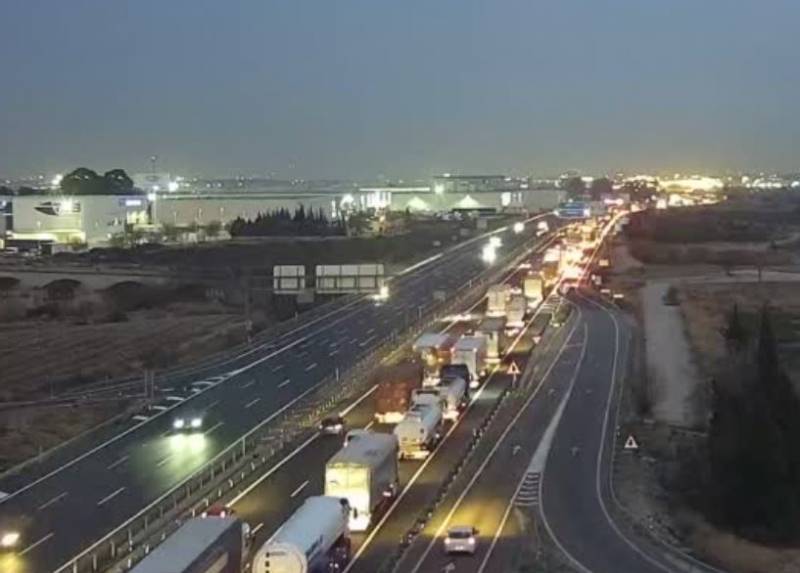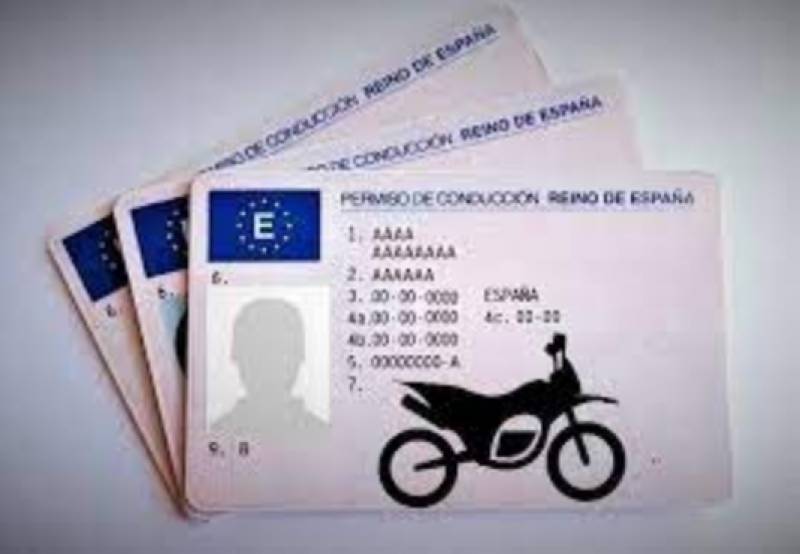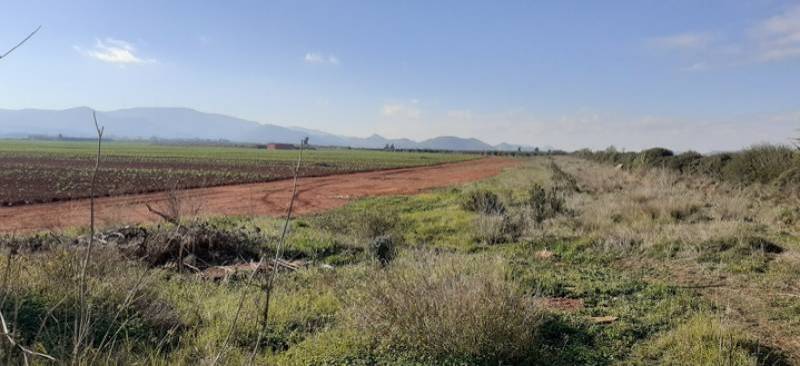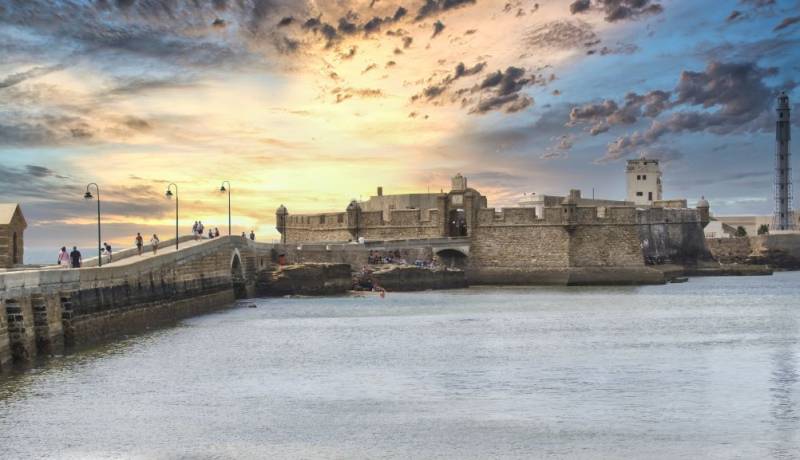article_detail
Spanish News Today Editors Roundup Weekly Bulletin Feb 9

FEATURED ARTICLES: "Huge traffic jams and upheaval as farmers strike in tractor protests" and "Plane tickets to Spain are about to get a lot more expensive"
The major story this week in Spain of the farmers’ strike, which is still going on and is about to be joined by truck drivers. Strikes are nothing new in Spain, of course, and we covered truckers’ strikes at around this time last year, too. But the reason these current protests have hit the news is because of the mass disruption they’ve caused to drivers – including ambulances and other emergency services – across the country.
More about that below, plus other travel stories, motoring news and the Carnival celebrations happening in Spain right now.
La tractorada
Drivers across Spain have been frustrated by major traffic jams and travel disruption this week as disgruntled farmers block motorways in protest over proposed new EU regulations and the situation is set to get a lot worse when truckers and hauliers join the demonstrations this weekend.
This wave of agrarian unrest is sweeping across Europe, with similar protests taking place in countries like France, Italy and Germany. In Spain, these nationwide strikes have been sparked by a range of grievances, including low prices for agricultural products, high production costs and what the farmers see as inadequate government support for the agricultural sector.
They’ve already managed to force the EU to reject its proposed controls on the use of pesticides, but the farmers are still unhappy that fruit and veg imported from outside the EU are not subject to the same scrutiny and regulations as those grown by European producers, allowing them to sell cheaper produce.
Another aspect of the conflict, of course, is the ongoing drought in much of Spain that means harvests of wheat, barley and other produce are being affected, and prices pushed up as a result. There is also a strange situation in Spain where farmers are paid just a handful of cents for each kilo of produce they deliver, while supermarkets sell them to end consumers for several euros per kilo, a markup of hundreds of per cent. Where does all that profit margin go? Because it’s definitely not going directly in the farmers’ pockets.
All these gripes combined have led the farmers to decide that the way forward is what is being known as a ‘Tractorada’, which means parking their tractors along major motorways and in city centres to cause as much disruption as possible, with the aim of getting their demands heard.
 Even before other drivers from the transport sector get involved in the strike on Saturday February 10, the farmers forced traffic to grind to a halt up and down the country. Earlier in the week, the Ayuntamiento in Málaga capital city recommended that people avoid driving in the centre and near the port due to the presence of tractors and dozens of towns were virtually impassable as hundreds of angry farmers demonstrated outside government buildings.
Even before other drivers from the transport sector get involved in the strike on Saturday February 10, the farmers forced traffic to grind to a halt up and down the country. Earlier in the week, the Ayuntamiento in Málaga capital city recommended that people avoid driving in the centre and near the port due to the presence of tractors and dozens of towns were virtually impassable as hundreds of angry farmers demonstrated outside government buildings.And on Wednesday February 7, around 500 farmers orchestrated a massive blockage of the A-30 motorway at Puerto de la Cadena near Murcia City, effectively shutting down the entrance and exit ramps of Ronda Sur and the junction connecting the MU-30 Alcantarilla-Murcia. Their actions resulted in significant delays for lorry drivers and other vehicles attempting to enter and exit the Port of Escombreras in Cartagena throughout the morning.
The Guardia Civil eventually convinced them to open up at least one lane in each direction, but only when they threatened the agricultural workers with criminal charges for illegally blocking the roadway.
After taking a break for a couple of days to “gather strength”, the demonstrators will return in full force this weekend with the support of other professional drivers.
In Alicante, groups advocating for farmers’ rights will organise protests in Orihuela and Villena on Friday February 16. As part of the demonstrations, two primary motorways will be blocked: the A-7, which leads to the Orihuela Costa, and the A-31 in Alto Vinalopó.
Going forward, the farmers have arranged hundreds of strikes throughout the month of February that will impact every corner of Spain.
Trains, planes and… bikes
If the travel disruptions caused by the striking transport workers weren’t enough, train passengers can also expect their plans to be scuppered in the coming weeks with the news that staff at Renfe, Adif and Rodalies rail services are downing tools from Friday February 9 in a series of coordinated protests.
One of the main grievances, according to the unions, is the failure of the Treasury to authorise the Collective Agreement six months after its negotiation. Additionally, the union is protesting the implementation of a 35-hour work week in Adif, which was agreed upon by the company and workers’ legal representatives but was nullified by the Ministry of Transport and Sustainable Mobility.
Following a 23-hour strike that will affect the Cercanías Madrid service on the 9th, CCOO and UGT of Catalonia have called on approximately 800 Rodalies workers to join the strike on February 16 and 19, from 7am to 9am and from 3pm until 5pm.
The unions have also proposed similar stoppages in commercial services of Renfe High Speed, Long Distance and International Trains.
 The traffic authorities in Spain like to keep us on our toes with constantly updated rules and regulations, and the General Directorate of Traffic (DGT) has just announced a big change that will impact motorcycle riders.
The traffic authorities in Spain like to keep us on our toes with constantly updated rules and regulations, and the General Directorate of Traffic (DGT) has just announced a big change that will impact motorcycle riders.The official date hasn’t been announced yet, but sometime in 2024, motorbike licence rules will undergo a major overhaul. Up until now, anyone who held a full driving licence for more than three years was also allowed to ride a motorbike up to 125cc. At some point this year, this will be rescinded any anyone who doesn’t already hold a specific motorcycle licence will need to take a new test to continue riding this size bike.
The traffic authorities also plan to force motorcyclists to wear a full face or modular helmet, as well as approved motorcycle gloves.
We’ve covered trains and automobiles, now for the bad news regarding planes. We knew it was coming, but it’s been made official: plane tickets to and from Spain are set to become even more expensive from March thanks to Aena’s decision to up airport charges by 4.09%.
And since the airlines will now have to pay the airport management company more for using its runways, terminals, parking and baggage handling services, this cost will have to be passed on to passengers. According to an Aena statement, the Maximum Revenue per Adjusted Passenger (IMAAJ), which will be applied to 2024 fares, will be 10.35 euros per passenger, which represents an average increase of 4.09% compared to 2023.
Low-cost carriers like Ryanair are naturally furious about the decision, but Aena president Maurici Lucena is adamant that Spanish airports will still be charging far less than other European rivals.
Last year, London’s Heathrow Airport implemented a 4.5% hike in tariffs, while Amsterdam’s Schiphol raised its rates by 12% and is expected to increase them even further in 2024. Similarly, Frankfurt Airport is planning a 9.5% increase in charges this year.
¡CARNAVAL!

It’s February, and that means Carnival season in Spain! Any excuse for a fiesta, eh…
In reality, there have been loads of costume competitions, drag queen contests, workshops and other events taking place in towns all around Spain for the last week or more, but what everyone really looks forward to each year is the main Carnival parade through the centre of town, what with the groups of people drumming, dancing, dressed up in ridiculous outfits, riding oversized and extravagant parade floats and throwing confetti streamers and sweets to the crowds.
In Torrevieja, the main parade takes place this Saturday, as it does in Cartagena and Yecla, while Águilas and Mazarrón both have their main parades happening on Sunday.
In Cádiz – which has one of the biggest celebrations for Carnaval in the country, along with Águilas and Las Palmas de Gran Canaria – the main parade is also happening on Sunday, but if you find yourself around the area you should definitely check out the city’s chirigotas, which are satirical singing groups that dress up and compete to create the rudest, crudest songs they can think of. Okay, so they’re in Spanish, sung in a strong ‘Cai’ accent and about local affairs and politics. But its still a great day out.
And don’t forget to dress up! Everyone does at Carnival time, so don’t worry about sticking out. You’ll only stick out if you don’t dress up in a fancy dress costume! If you have nothing to wear, at the very least you should paint a red dot on each of your cheeks using red lipstick, which is the typical Carnival outfit for those who don’t go all in on the fun.
Murcia
Okay, so we’re still in the midst of Carnival celebrations and the weather has taken a bit of a turn for the worse recently. But that hasn’t stopped Cartagena Council from starting to get the beaches ready for the Easter holidays and the sunshine.
Cabo de Palos, the southern part of La Manga del Mar Menor, Playa Honda and similar areas all fall under Cartagena’s care, and the Council is spending around 29,000 euros to clear algae deposits, extract sand from exposed sandbars and resurface the sand on these and other beaches.
Their aim is to help prevent sinkholes and ruts from forming on the sandy surface so that sludge doesn’t ooze up to the surface. Very kind of them. But poor old Los Nietos, for yet another year, feels hard done by, as if they’re not getting enough attention and always come last when it comes to fixing up the beaches and the town.
Inspections have already been carried out to undertake all this work on Los Nietos beach, but a start date has yet to be given, leaving locals fearing a repeat of last year when a large portion of the coast was left unprepared for summer. And it’s not only the beach, but broken benches and unpruned palm trees which they say need urgent attention.
Another project that will soon be undertaken around the Mar Menor is the creation of a so-called ‘ecological corridor’ surrounding the lagoon to try and reduce the impact of flooding and restore the health of the ecosystem.

This will basically involve protecting and restoring areas of forest land and natural habitats around Torre Pacheco, Los Alcázares, San Pedro del Pinatar and other Mar Menor localities so that they can regain their natural functions. This green corridor is supposed to act as a sort of natural filter that will hold back water during periods of heavy rainfall and stop it from flowing into the waters of the Mar Menor, carrying with it harmful sediment. If successful, it could be a major rewilding project and a feather in the cap for environmental protection in an area that has historically been sadly polluted.
It seems almost ridiculous to be talking about pummelling rain and floods when the Region of Murcia is on the brink of drought. Data show that this January just gone was the warmest since 1960 and the seventh driest of the 21st century so far. Overall, just 8.6 litres per square metre (l/m2) of rain fell in January, most of it during a storm that we had at the beginning of the month. During the hydrological year, which ran from October 2023 to January 2024, a total of just 16.3l/m2 was registered, which represents only 13% of the average.
Which is why it seems odd, then, that Cartagena should be considered as the ideal candidate to be sending reserves of safe drinking water to Andalucía if the drought gets worse over there. We’ve already detailed in these pages how the Junta de Andalucía has passed a new fiat stating that water be brought by ship to its ports in a situation of extreme drought. But what’s new is that they have agreed with Murcia that it should be brought from the Escombreras desalination plant in Cartagena.

The truth is that the drought is much worse in all of Andalucía than it is in Murcia. The desalination plant in Escombreras is actually one of the largest in the whole of Spain. Removing the salt from briny water to make it safe for human consumption and for watering plants is predicted to be the great white saviour of Spain’s water crisis. The Escombreras plant has the capacity to produce more than 22.8 cubic hectometres of desalinated water, though right now it is producing barely a tenth of that because of the restrictions on irrigation that the water authorities have placed on irrigators who buy the water.
But they could theoretically produce a lot more water, presumably enough to supply Murcia and much of parched Andalucía. And if that’s the case, it makes you wonder why they’re making such a fuss over the drought if they already have a solution?
Check out our EVENTS DIARY for stuff to do in the Region of Murcia:
Spain
Let’s talk about some ways to save money. You might be interested to know that you could live out your dream in a quaint Spanish village while taking advantage of some tax breaks to boot, as there are several depopulated Spanish villages that offer grants and subsidies to individuals willing to resettle and revitalise these communities.
With the increasing appeal of urban areas among young people seeking better employment prospects and a more dynamic lifestyle, rural areas in Spain have experienced a significant decline in population, resulting in a phenomenon referred to as ‘la España vacía’ or ‘empty Spain’. To address this issue and revitalise these towns, the Spanish government and local authorities have introduced incentives aimed at reversing the trend and injecting new life into rural communities.
These involve personal income tax deductions for buying or renovating property in declining areas in picturesque and peaceful parts of the country, including the Region of Murcia, the outskirts of Madrid and rural Galicia.
National Police in Ibiza this week collared a dangerous Dutch fugitive wanted for a very violent and high-profile robbery that took place back in 2005. According to investigators in the Netherlands, the theft occurred at Schiphol Airport in Amsterdam, where the suspect and several associates stole valuable jewellery and diamonds valued at 72 million dollars. The perpetrators allegedly employed firearms and a great deal of violence against their victims during the heist.
Following a tip-off in November last year that the wanted man could be hiding out on the Spanish island, officers tracked the fugitive to a lavish villa and arrested him as he left his home.
ð©Detenido en #Ibiza un fugitivo buscado en los #PaísesBajos desde el año 2005
— Policía Nacional (@policia) February 7, 2024
ð¹El prófugo participó en un robo de un cargamento de joyas y diamantes valorado en 72 millones de dólares
ð¹Había modificado notablemente su aspecto físico para evitar ser reconocido pic.twitter.com/4lfZk8qILw
During the arrest, the officers noted that the man had gone to great lengths to alter his appearance compared to the photos they had received from the Netherlands, and looked much younger and thinner. They suspected he may even have undergone plastic surgery to alter his appearance.
Last week we brought you the story of the expat television viewers in Spain who were experiencing problems watching ITV and BBC due to the switchover from SD to HD. Well, now it seems that Spanish TV channels are getting in on the act too, and anyone who regularly watches Spanish television may have problems accessing their regular programming this month, too.
Spanish television broadcasters will begin phasing out their Standard Definition channels in favour of High Definition this month of February and all the SD channels will soon disappear completely. This was actually signed into law five years ago, and now the Spanish channels only have until next Wednesday February 14 to change all their broadcasts to HD to improve image and sound quality.
If you’ve got a TV that was made in 2009 or later, you should be okay as these are generally compatible with HD, but if you have a slightly older TV set you may no longer be able to access your usual channels and might need an external decoder to continue watching Digital Terrestrial Television (DTT). Even if you do have an HD-equipped TV, you’ll probably still have to retune it because some channels will be broadcast on a different frequency than they were before.
Alicante
In a heart-stopping incident in Alicante this week, traffic police engaged in a high-speed car chase this week, only to discover that the driver was a mere child.
At 3am, a patrol from the Local Police of El Campello observed a vehicle moving in the wrong direction through the streets of Alicante. When the officers attempted to stop the driver, he suddenly accelerated and fled in his vehicle, triggering a perilous pursuit.
The driver navigated through numerous avenues in the wrong direction, dodging traffic signals and putting other motorists at risk, but he continued to evade capture, leading the authorities on a wild goose chase through the city streets.
He eventually sped down a dead-end alley and officers were able to corner the driver. To their astonishment, this turned out to be a 14-year-old boy. His mother arrived at the scene accompanied by a lawyer, and the minor confessed that he had stolen the car from his home following an argument with his family.
Worryingly, he also revealed that he had learned how to drive by watching online tutorials on social media platforms.
 A group of Dutch tourists underwent a terrifying ordeal as they casually took in the sights of Elche when a knife-wielding thief threatened the holidaymakers and demanded cash. After the tourists reported the incident, officers sped to the scene, only to discover that the suspect had already fled.
A group of Dutch tourists underwent a terrifying ordeal as they casually took in the sights of Elche when a knife-wielding thief threatened the holidaymakers and demanded cash. After the tourists reported the incident, officers sped to the scene, only to discover that the suspect had already fled.However, the holidaymakers provided a detailed description of the man’s appearance, clothing and the location of the discarded knife, which was retrieved from a nearby rubbish bin.
Not long after, officers from the National Police found the 41-year-old suspect on a nearby street and took him into custody. During interrogation, the man insisted that he had merely asked for money and never intended to use the knife.
Regardless of his claims, the law enforcement officials arrested the man for the offense of robbery with violence and intimidation.
Every morning, come rain or shine, dozens of patients gather outside the Aguamarina medical centre at the back of Cabo Roig strip waiting for an appointment. The reason for the queues is that this is the only facility in Orihuela Costa for the expanding population.
The general consensus is that the area needs a bigger facility. Nonetheless, disagreements persist regarding the ideal location for such a facility.
On one hand, the Ministry of Health proposes expanding the current structure into the neighbouring parking lot. However, local representatives firmly oppose this plan, claiming this would create even more traffic jams along an already overburdened street and stressing the necessity for a separate building.
Now, a new location for an extra health centre has been proposed. Well, it’s not exactly ‘new’, since the large site was actually suggested by former Mayor Emilio Bascuñana back in 2021, but the project was shelved at the time and has now resurfaced.
Located in PAU-20 La Ciñuelica, this plot of land has 10,693 square metres of space and councillors in favour of the move believe it would contribute to a more geographically balanced distribution of resources, as it would enable Aguamarina to focus on the southern half of Orihuela Costa, while the new medical centre would cater to the needs of the northern half.

Those hoping for a quick solution are likely to be disappointed, as conflicting information is flooding out of every department, and the Ministry of Health itself is remaining very tight-lipped about any and all plans to improve the local health services of the Orihuela Costa.
Andalucía
Many foreigners in Spain live or own property on ‘urbanizaciones’, communities which can contain anywhere from a handful of homes to thousands of properties, and which have their own community presidential team to make decisions about the running of the community and any future projects it undertakes for the good of the owners. It was revealed this week that one community president of an urbanisation in Estepona had illegally been paying himself a salary of 86,700 euros a year for several years.
This was Stephen Hill on the Costa del Sol’s Torre Bermeja urbanisation, who decided to grant himself the job title of ‘Urbanisation Manager and Administrator’ and a handsome wage to go with it, for a position that is done for free!
To put that in context, that’s around the same as what the president of the whole of the Andalucía region, Juanma Moreno, makes per year. What’s more, Mr. Hill also used his power to exempt himself from paying any community fees, meaning that in addition he dodged around 6,000 euros over the years.
Unsurprisingly, the residents of the community are now suing him and he could face criminal charges as what he has done is fraud.
 Over in Cádiz, work is being done to shore up the walls of the provincial capital’s Castillo de San Sebastián, an 18th-century fortress that juts out into the sea at the end of a picturesque little stone walkway. The Costas coastal authorities are spending almost 1 million euros to stop bits of the walls of this historic monument from crumbling into the sea, but in the same breath they’ve said it’s simply not enough.
Over in Cádiz, work is being done to shore up the walls of the provincial capital’s Castillo de San Sebastián, an 18th-century fortress that juts out into the sea at the end of a picturesque little stone walkway. The Costas coastal authorities are spending almost 1 million euros to stop bits of the walls of this historic monument from crumbling into the sea, but in the same breath they’ve said it’s simply not enough.You see, Costas don’t have the right to touch the fortress inside. Their powers only extend to the bits that could affect the coastline. But the truth is that this fortress, which belongs to the State and has been closed to the public for more than a decade due to deterioration.
They know it’s falling down, but no one wants to do anything with it. Conservative estimates in the past have placed the bill for trying to restore this icon of the city at 30 million euros, but a quick look at the Costas’ nearly million-euro project that focuses solely on a small section of the outer wall is enough to realise that 30 million won’t go far with this castle.
Now, Cádiz City Council may take over ownership from the government and apply to Europe for funds to turn it into a science museum or marine research centre. Whatever it takes.
Meanwhile, just across town in the newer part of the city, one promotor has broken ground on what will become the first skyscraper in Cádiz – a 20-storey residential building with 97 homes going up in the area near the football stadium which promises to change this historic city’s skyline forever.
Most of the homes which are to be built have already been sold off plan thanks to the prime location and the fancy facilities the building will boast, such as a shopping area, an underground car park, an area for coworking, a gym and a rooftop pool with amazing views out over the entire Bay of Cádiz.

You may have missed…
- It’s Lunar New Year!
This Saturday is the Lunar New Year, when we welcome in the Year of the Dragon, and there will be celebrations taking place in Chinese and Asian communities in Spain on New Year’s Eve, Friday night. - How to watch the Super Bowl 2024 in Spain.
It’s the Super Bowl this weekend! The Kansas City Chiefs will be facing off against the San Francisco 49ers on Sunday February 11 in Super Bowl LVIII, and this year’s halftime show will feature music from Usher. Of course, there’s a big time difference for viewers in Europe. Here’s what time the Super Bowl will be on in Europe (GMT and CET) and how football fans can watch the Super Bowl from Spain. - Do the Spanish celebrate Valentines Day?
And after all that’s done this weekend, we’ve got Valentine’s Day next week. Click the link above to find out a little bit about how the Day of Love is celebrated in Spain. - WATCH: Gibraltar monkey escapes to Spain.
A Barbary macaque with a taste for adventure has captured the hearts of people all over the country this week after crossing the border from Gibraltar into Spain (without a passport!). The monkey entertained the Cádiz town of La Línea de la Concepción for more than a day before he was eventually captured. - Bryan Adams will be performing in Spain this November.
Canadian rocker Bryan Adams will be coming to sing in Murcia later this year with a live concert coming up in November. Tickets on sale on Wednesday February 14.
And there we are for another week. Hope you liked this edition of the Editor’s Roundup Weekly Bulletin, and we’ll have another for you next week.
See you then!
Contact Spanish News Today: Editorial 966 260 896 /
Office 968 018 268

















